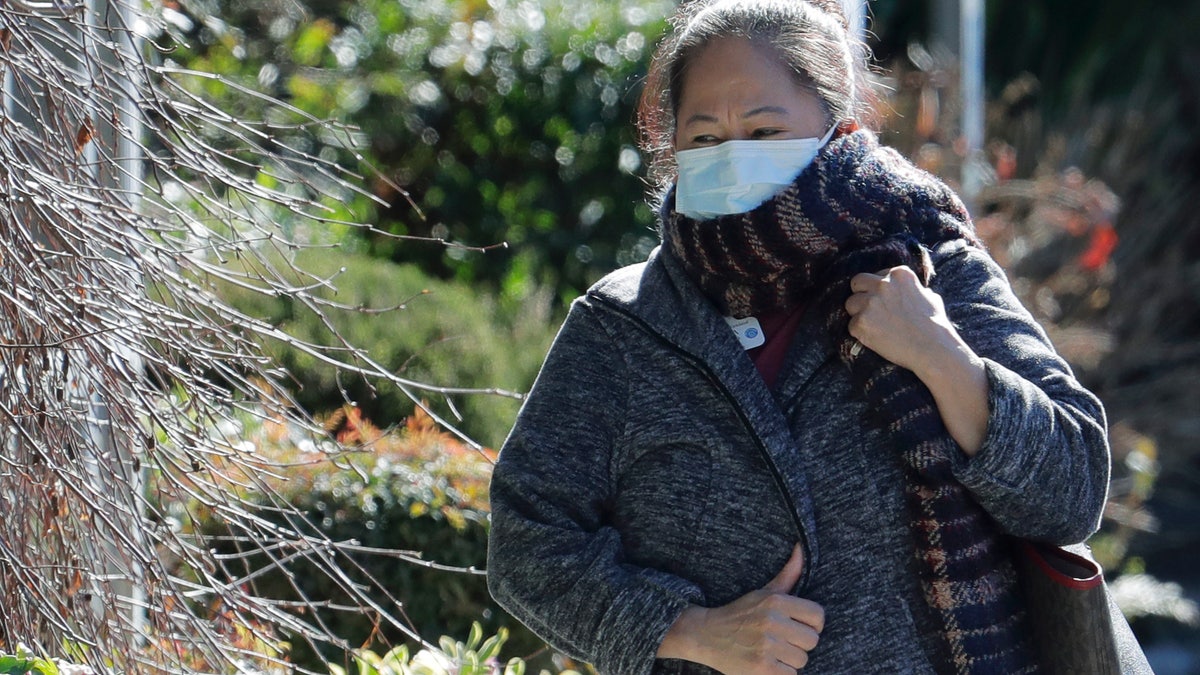What does it mean to self-quarantine?
With the spread of the coronavirus, those who test positive are being told to self-quarantine. This video explains what it means to self-quarantine.
As the coronavirus continues to spread throughout the globe, many in the U.S. have been asked to self-quarantine to slow the spread of the virus.
This may be because they came into contact with an infected person or had traveled abroad to a Level 3 country on the CDC's COVID-19 travel advisories page.
Some of our elected officials have even been placed under self-quarantine. Five members of Congress, including Sen. Ted Cruz R-Texas and Rep. Matt Gaetz R-Fla, were self-quarantining at home after coming into contact with a person diagnosed with the virus.
Mark Meadows, Trump's incoming chief of staff will also self-quarantine over the next two weeks due to coronavirus fears.
MARK MEADOWS, TRUMP'S INCOMING CHIEF OF STAFF, TO SELF-QUARANTINE OVER CORONAVIRUS FEARS

A worker at the Life Care Center in Kirkland, Wash., wears a mask and a scarf as she walks away from the facility, Monday, March 9, 2020, near Seattle. (AP Photo/Ted S. Warren)
But what does it mean to self-quarantine?
Self-quarantine essentially means that people believed to be exposed to the virus should stay at home in isolation for the virus' 14-day incubation period. The virus can reportedly be present in a person without symptoms. Health officials have used the measure as a precaution -- even when in many cases, you haven't officially contracted the virus.
Quarantines are meant to restrict the movement of people who have been exposed but haven't tested positive. Self-quarantine helps to limit that spread at home.
You can still live with your family during self-quarantine, although the CDC recommends you stay in your own bed, use a separate bathroom and wear a face mask when around others.
"People who are mildly ill with COVID-19 are able to isolate at home during their illness," the CDC said. "You should restrict activities outside your home, except for getting medical care. Do not go to work, school, or public areas. Avoid using public transportation, ride-sharing, or taxis."
During self-quarantine, you are also recommended to perform hand hygiene frequently and avoid touching your eyes, nose, and mouth with unwashed hands.
Self-quarantine will impact mobility but is only a short term change. The CDC recommends stopping activities outside your home unless you need to see a doctor.
“Do not go to work, school or public areas,” the CDC advises. “Avoid using public transportation, ride-sharing or taxis.”
You should also stock up on supplies before self quarantining and stay hydrated. Also being stuck at home will require certain activities to pass the time.
FAMILY OF MISSOURI'S FIRST CORONAVIRUS PATIENT BROKE SELF QUARANTINE, ATTENDED SCHOOL DANCE
Self-quarantine vs self-isolation
Self-quarantine is different from self-isolation, according to the CDC. Self-quarantine is a method used by those who may be exposed, but have yet to show symptoms. Self-isolation is for people that are reasonably believed to be infected with the virus and could infect others.
Those who returned to a Level 3 country listed on CDC's coronavirus travel advisories page will be required to self-quarantine for 14 days.
So if you traveled to China, South Korea, Iran, Italy, Hong Kong or Japan recently you will most likely have to self-quarantine for two weeks when arriving in the U.S.
CLICK HERE FOR FULL CORONAVIRUS COVERAGE
Most of the infected cases in the U.S. came from people who had traveled to countries infected with the virus, so self-quarantine is a way to treat it before you have the chance to spread it to other people. It's just a way to contain the spread from home during that 14 day period.





















